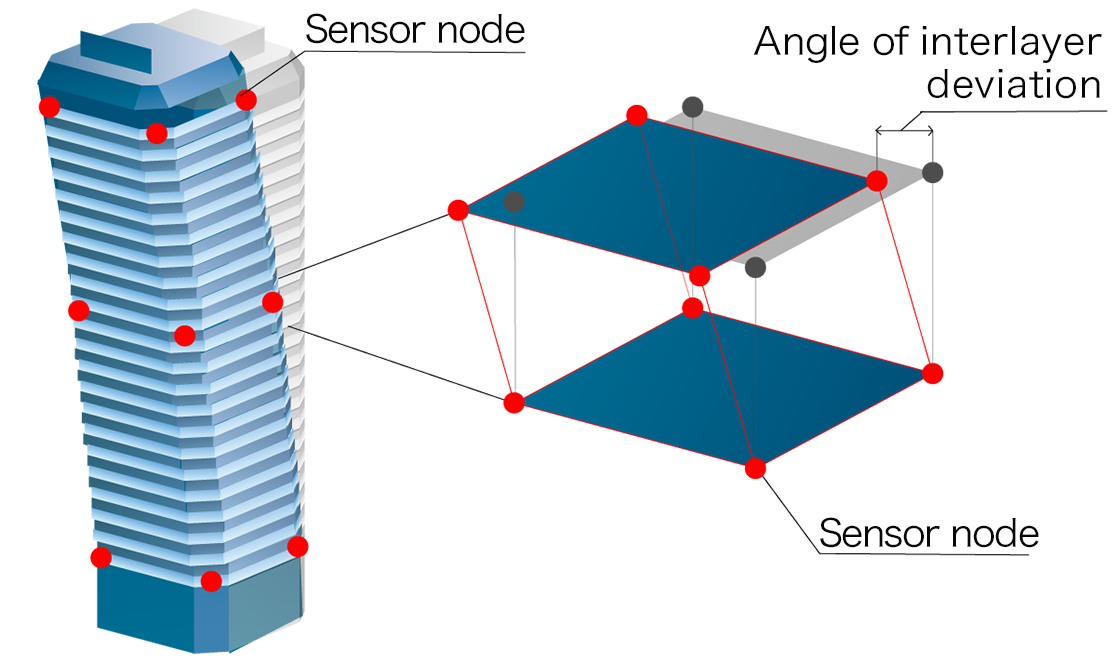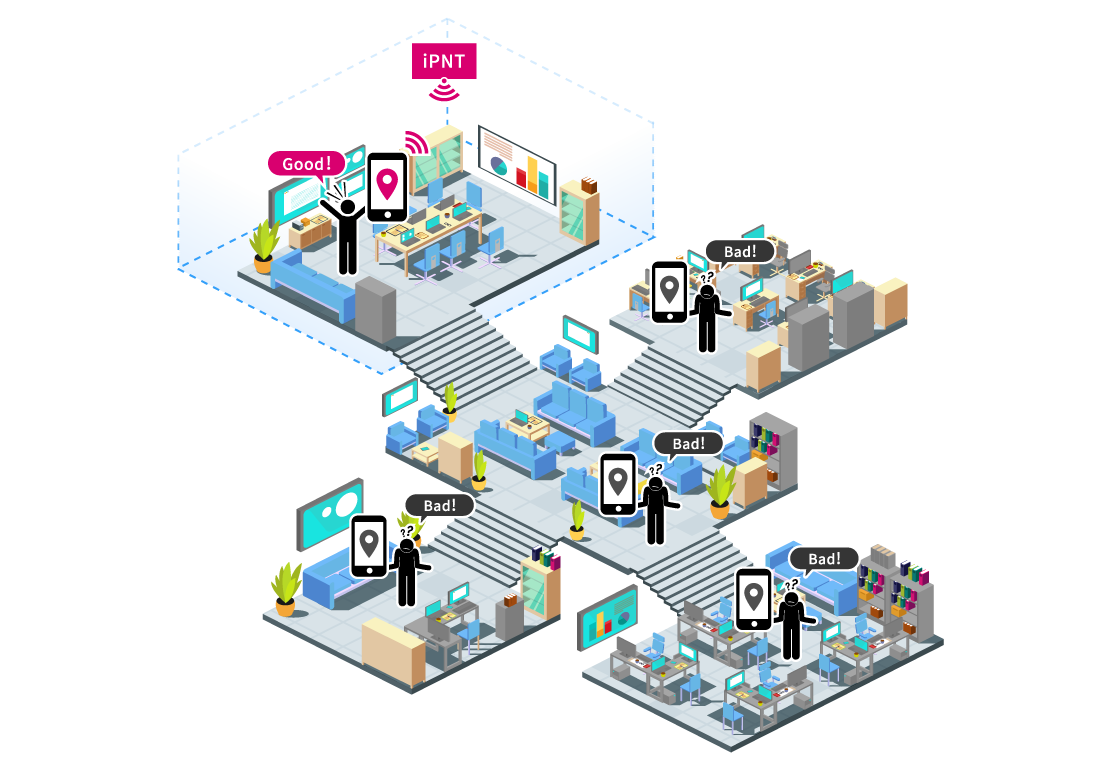With the digital society widely changing and evolving through advances in IoT, AI, automation, and big data, iPNT will be used in all contexts in which position and time are critical for objects and things.
Time synchronization using GNSS allows for sharing accurate time on a global scale. This opens up the market to not just the navigation sector that GNSS traditionally served, but promising markets like telecommunications, broadcasting, building maintenance, payment and finance, and the sharing of IoT data, among others.
Users can receive iPNT signals at the location needed for their facility and use this data, which contains location information, in a ubiquitous manner.
Therefore, iPNT provides a system for seamless indoor positioning and high-accuracy time synchronization that will contribute in major ways to Society 5.0.
Markets requiring accurate time and location data
Disaster data, cyber-physical systems (CPS), and IoT sensors used in underground shopping concourses and facilities,High-speed financial transactions, smart grid, office ICT, Japanese version of E911, blockchain technology, 5G communication,Edge computing, building safety monitoring, smart city, geo-fences, smart factories
With e-commerce becoming more mainstream and packages becoming smaller and more frequently shipped, the logistics sector, which hinges on the use of trucks and warehouses, now faces a shortage of manpower and needs a way to drive greater efficiency.
Large-scale warehouses are becoming more widespread, with a logistics grid previously scattered and now more centralized. Given this context, there is ever greater demand for seamless positioning as offered by GNSS.

Large-scale factory facilities utilize vast amounts of sensor data to aggregate and analyze information about quality and uptime within each plant.
Monitoring multiple data points at millisecond levels hinges on the data being consistent and synchronized through time-series data. However, creating time-series data is exceedingly time-consuming and labor-intensive.
iPNT offers a solution for receiving GPS signals within factories and obtaining an accurate time anywhere indoors.

Japan, with its frequent earthquakes, utilizes seismic reinforcement for many buildings. Many tall buildings employ building health systems using IoT vibrometer sensors to track the state of the building. These vibrometers must be synchronized and track the exact time.
Allowing for receiving time signals anywhere within a building offers greater freedom of installation.
This solution is also likely to be widely adopted in contexts requiring advanced time synchronization, such as in edge computing and indoor use of next-generation telecommunications.
iPNT provides high-accuracy time data over traditional television coaxial cables and also includes position data with that signal. This will become a key piece in the basic infrastructure used by buildings and contribute to the use of iPNT time and space data in smart buildings.

Geo-fences are central to location services and synchronize with permissions and rights to a specific area to allow entry/exit and other privileges. Enabler’s goal for geo-fences is to utilize iPNT to not only obtain position data about a specific area, but also imbue geo-fence systems with time data to expand their possibilities.
*Geo-fences are a virtual geographic boundary. Using GPS and other positioning technology within them allows for transmitting information specifically to people within XX meters radius of a central coordinate.

